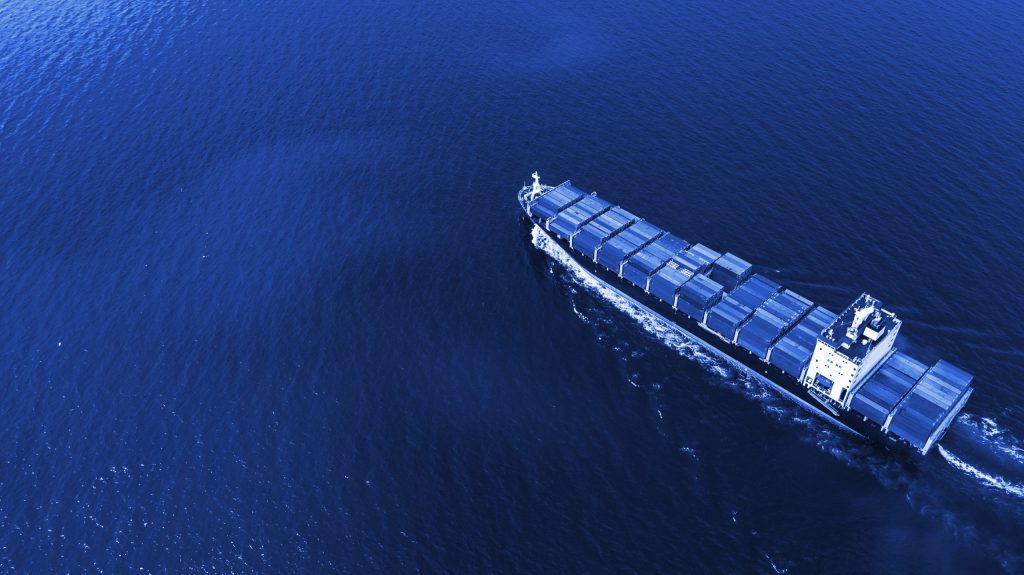Could Estonia become a flag state for green ships?
One new ship under the Estonian flag could generate EUR 45,000–240,000 in tax revenue for the state budget, says the Foresight Centre report “The Future of Estonia as a Flag State. Development Scenarios up to 2040“. One proposed path for Estonia’s development is putting the emphasis on environmental sustainability and becoming a “flag state for green ships”.

Attracting ships under national flags has become an international competition, which has seen even landlocked countries become seafaring. As a result of this long-running battle, Estonia’s ship register in 2019 included practically no cargo ships of 500 and higher net tonnage, not even the ones owned by Estonian capital.
How much capital have we forfeited? One new ship under the Estonian flag could generate EUR 45,000–240,000 in tax revenue from the on-shore sector. The exact amount depends on the interest of shipping companies in the products and services offered by our on-shore sector.
Another 300 ships under the Estonian flag
A reform was carried out in the middle of 2020 to bring cargo ships and passenger ships that engage in regular services outside the European Economic Area under the Estonian flag, to increase the demand for on-shore services on offer for ships, and thus grow Estonia’s economy as well as bring more tax revenue into the state budget. The impact analysis of the relevant draft legislation foresaw an additional 300 ships coming under the Estonian flag.
In order to significantly reduce the labour tax burden of seamen, a tonnage tax system was introduced and a two-system bareboat chartered ships register was established. The work on the digital solutions of the registers is still ongoing; these should be launched at the beginning of 2021, rendering Estonia’s register service user-friendly, and combining it with a hassle-free system for paying the taxes.
If we compare Estonia’s new solution with successful flag states such as Portugal (Madeira) and Malta, we see that although the 1st shipping register (ships owned by legal persons registered in Estonia) fees are competitive, the 2nd register (ships owned by persons without a registered address in Estonia) fees are higher than in Malta or Madeira. An even more salient difference is the continuation of social and unemployment insurance tax for seamen originating from outside the European Economic Area. Our interviews with ship owners indicate that if they were to bring their ships from Madeira or Malta under the Estonian flag, they would be hit by a considerable increase in taxes – for an owner of a ship with a crew of twelve, this would mean an extra expense of ca EUR 22,000 a year.
“Race to the North” in the form of an even more extensive reduction of fees and taxes could, of course, be a competition that Estonia would not necessarily want to win if we hope to avoid tax loopholes or damage to our image, which could happen, for example, when ships of owners who violate the rules or have a shady past end up in our ship register.
Flag state for green ships?
Although a digital register with excellent user experience could be an advantage for Estonia, other countries are also not idle and have already developed some easy-to-use digital solutions. However, Estonia’s competitive edge might be its digital signing and remote notarial authentication service that is accessible to residents and e-residents; the latter allows signing contracts that require notarial authentication without physically travelling to Estonia. This way, the efforts towards becoming a flag state and the e-residence initiative could mutually support each other.
Looking further into the future, it would make sense to ask how Estonia as a flag state could use the development trends to its advantage and create benefits that the current strong flag states still do not have – instead of chasing after the others we should lead the race.
The increasing automation of ship guidance systems creates options for reducing the crews. The Estonian register would do well to remain well-disposed towards a discussion about the types of technological solutions that would help to guide ships even with smaller numbers of the crew than the minimum requirements in the current legislation. Reducing a crew by just two or three members brings considerably bigger savings than a small reduction in register fees.
The emphasis is increasingly put on environmental sustainability both in Europe and around the world. Could Estonia’s trademark be “flag state of green ships”? Additional benefits for green ships could be balanced out and even surpassed with the revenue received if the ships were eco-rebuilt in the Estonian shipbuilding and repair companies. While we connected flag state with e-residency earlier, the realisation of this objective would require us to combine the efforts in the area of flag state with measures in entrepreneurship and industrial policy.
The report “The Future of Estonia as a Flag State. Development Scenarios up to 2040” was presented at the conference “A Different Kind of Future” on 30 September. Read more about the conference here.
More information on the Foresight Centre research into shipping and the maritime economy is available here. You can download the summary of the full report from the same page.
The Foresight Centre is a think tank at the Chancellery of the Riigikogu that analyses long-term developments in society and economy. The Centre conducts research projects to analyse the long-term developments in the Estonian society and to discover new trends and development directions.
Latest news
-
27.06 2025Current low birth rate will lead to up to 1.3 billion euros less tax revenue in the future
In its new short report “The impact of population ageing and low birth rate on long-term state revenue and expenditure”, the Foresight Centre notes that the lower than projected birth rate will reduce government spending on family policy and education, but in the long term, it will mean up to 1.3 billion euros less in tax revenue.

 An independent think tank at the Riigikogu
An independent think tank at the Riigikogu